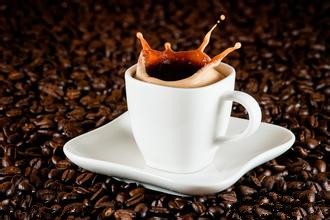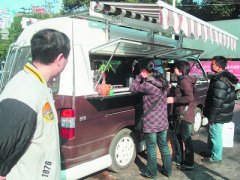Coffee basic knowledge Coffee drinking habits peculiar to Japan

The first coffee spread to Japan was Nagasaki in the Yuanlu period. And people officially accepted it from the Meiji era. Now let's take a look at the coffee history of Japan.
At first, the Japanese were not used to the successive opening of coffee houses in Western Europe, when the literature and art of coffee culture were in bloom, while Japan was in the midst of the strict policy of locking up countries in the Edo era. Coffee, the first drink at that time, was set up at the Dutch store off the island of Nagasaki (1641) and presumed to have been brought in at that time. However, those who can get in touch with foreigners are servants (officials), businessmen, interpreters and tourist girls. Two or three interpreters of Zun Beiruji recorded in 1776 finally knew the delicacy of coffee. "Coffee", which specially spread to the island to symbolize foreign culture, could not be popularized at that time. "
The Japanese drink coffee is a crazy singer and opera writer in 1804. In the book Qiongpu, the people of Shushan in Daejeon were invited to drink coffee on a red-haired boat. the beans were fried black and powdered and mixed with sugar, and the bitter smell could not adapt to the bitterness. from the background of coffee imported from the island and can not be widely accepted, the lock-in policy has indeed affected the Japanese people's unaccustomed to the taste of the new drink.
Sisamert, who went to the Dutch residence on the island in Japan in 1823, seems to like coffee. In the book "Edo to visit the House", it is recorded that "when the Japanese get along with us, they like to drink coffee."
The real popularity began in the middle of Meiji. Members of the founding literary magazine Hiroshi Kitahara, Woodpecker Ishikawa, Kwangtaro Takamura, Haruo Sato, and Hefeng Nagai meet each month at the "Hung Nest" venue in Hashimachi, Japan. In that shop, you can drink authentic French cuisine and foreign wine, and coffee is also authentic French deep-roasted coffee. The nest of Hong is like a social field for literati.
From the Meiji era to the Taisho era, cultural salons like this did help create several coffee houses, and Japan finally entered the culture of coffee. However, it is still a rare shop for ordinary people.
The coffee salon formed at that time was a social place for literati or literary youth, but at the same time affordable coffee houses were popular unwittingly. In the heyday of the Taisho era, there were more than 20 branches across the country. Why is the coffee salon so popular? Because the coffee in the high-end western restaurant cost 15 yuan at that time, while imitating the coffee shop in Paris or New York, a cup of low-priced coffee with 5 yuan was thoroughly implemented. So you can have authentic and fragrant Brazilian coffee at a price of 1/3. In the national well-known coffee salon, it is hard to count the Japanese who have tasted delicious coffee. Coffee salon has left an indelible contribution to popular coffee.
In the Taisho era, the number of coffee lovers did increase a lot, and it became more popular in the Showa era, but World War II stopped importing coffee because it was an "enemy drink." In Japanese life, coffee disappeared for a moment. Coffee is appreciated and loved by people as "messengers of peace".
At present, the competition in the Japanese coffee market is very fierce. Including tea shop and family coffee and instant coffee, home coffee and office coffee, all kinds of canned coffee, plus hospitality coffee, delicious coffee and so on. In particular, the more authentic demand for coffee in the Pyeongcheng era has also increased.
Important Notice :
前街咖啡 FrontStreet Coffee has moved to new addredd:
FrontStreet Coffee Address: 315,Donghua East Road,GuangZhou
Tel:020 38364473
- Prev

The car turns into a mobile "coffee shop"
Transparent glass windows, eye-catching price lists, neat coffee cups and professional baristas indicate that this is an authentic coffee shop, but the appearance of the shop is different-it is located in a converted car. Several young citizens are buying coffee in a mobile coffee shop. Transparent glass windows, eye-catching price list, neat coffee cups, professional baristas
- Next

Omani people pay attention to multi-boutique coffee culture when drinking coffee.
Oman has a long history and splendid culture. Its residents pay attention to etiquette, dealing with people, welcome to and from all have a fixed set, from drinking coffee and other trivial things can be seen. The Omani call coffee Kahewa and like to add spices such as cardamom to the coffee. Their coffee is thick black and contains a bitter taste similar to that of traditional Chinese medicine, which is different from the mellow coffee in the West. The reporter went to Muscat
Related
- Beginners will see the "Coffee pull flower" guide!
- What is the difference between ice blog purified milk and ordinary milk coffee?
- Why is the Philippines the largest producer of crops in Liberia?
- For coffee extraction, should the fine powder be retained?
- How does extracted espresso fill pressed powder? How much strength does it take to press the powder?
- How to make jasmine cold extract coffee? Is the jasmine + latte good?
- Will this little toy really make the coffee taste better? How does Lily Drip affect coffee extraction?
- Will the action of slapping the filter cup also affect coffee extraction?
- What's the difference between powder-to-water ratio and powder-to-liquid ratio?
- What is the Ethiopian local species? What does it have to do with Heirloom native species?

